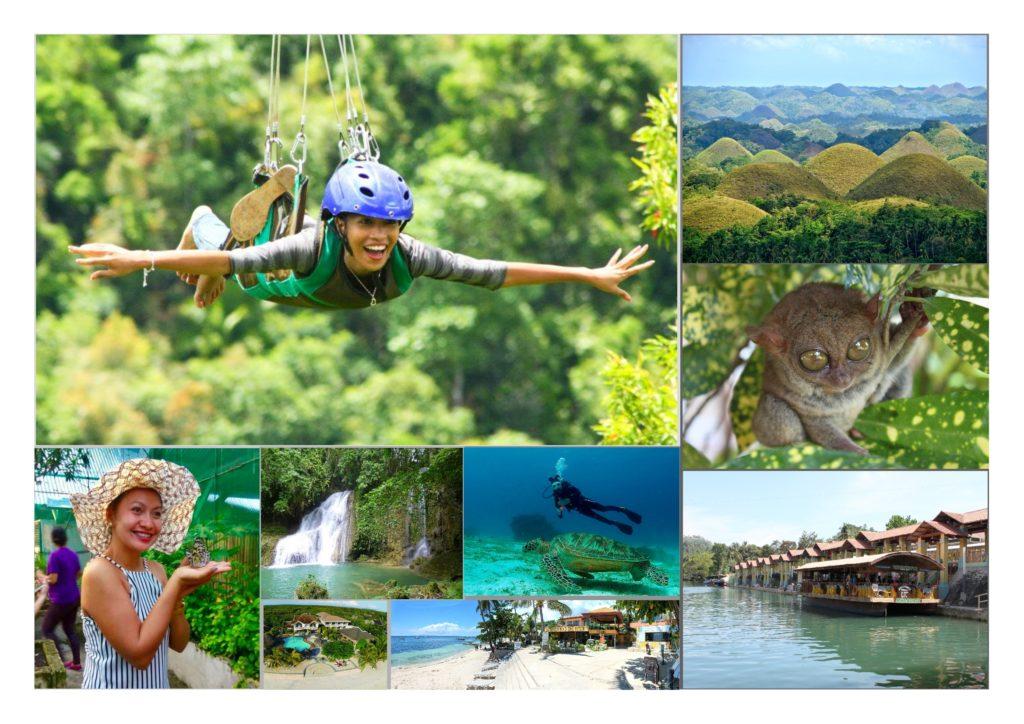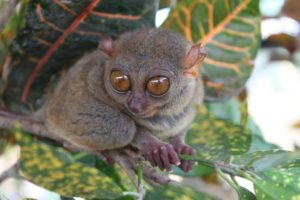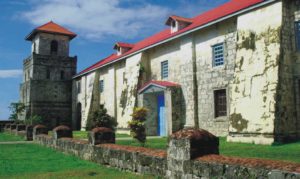
Bohol Must See Tourist Spots:Average Tour Rates and Tours Information For Bohol Philippines

**Prices are subject to change**
Sagbayan Peak Tour:
It will take about 7 – 9 hrs
Cost is P3500 for VAN rental and P3000 for car rental. Contact Bohol Tour Packages for more information
Tour includes:
1. Blood Compact site
2. Baclayon Church - entrance fee P25 per head
3. python sanctuary - entrance fee P10 per head
4. tarsiers - donation only
5. loboc river cruise - lunch buffet (P550 per head)
6. hanging bridge - entrance fee (P10/hd)
7. manmade forest
8. butterfly sanctuary – entrance fee P30 per head
9. Chocolate Hills - entrance fee P50 per head
10. Sagbayan Peak – entrance fee P20 per head
11. Maribojoc Tower – entrance fee P10 per head
Chocolate Hills Tour:
It will take about 6-8 hrs.
Cost is P3000 for VAN rental and P2500 for car rental
Tour includes:
1. Blood Compact site
2. Baclayon church and museum - entrance fee P25 per head
3. python sanctuary - entrance fee P10 per head
4. tarsiers - donation only
5. loboc river cruise - lunch buffet (P550 per head)
6. hanging bridge - entrance fee (P10/hd)
7. Manmade forest
8. butterfly sanctuary – entrance fee P30 per head
9. Chocolate Hills - entrance fee P50 per head
10. Aproniana Souvenir Shop
Panglao Tour:
It’s P2500 for VAN rental and P2000 for car rental.
It will take about max. of 6 - 8 hours.
Tour includes:
1. Dauis Church
2. Hinagdanan Cave (entrance fee P15/hd)
3. Panglao Church
4. Bohol bee farm- entrance(20/hd)
5. Beach of your choice (some charge entrance fees (P350-500/hd) some are free like Alona Beach)
Panglao TRANSFER: Drop off and Pick up. Cost Is P1500 for VAN rental and P1300 for car rental
Note: Entrance fees and Lunch buffets are not included in the package.
Tours to all these great Bohol destinations!
The Famous Bohol Chocolate Hills

The Chocolate Hills are probably Bohol's most famous tourist attraction. They look like giant molehills, or as some say, women's breasts, and remind us of the hills in a small child's drawing. Most people who first see pictures of this landscape can hardly believe that these hills are not a man-made artifact.
However, this idea is quickly abandoned, as the effort would surely surpass the construction of the pyramids in Egypt.
The chocolate hills consist of are no less than 1268 hills (some claim this to be the exact number). They are very uniform in shape and mostly between 30 and 50 meters high. They are covered with grass, which, at the end of the dry season, turns chocolate brown. From this color, the hills derive their name.
At other times, the hills are green, and the association may be a bit difficult to make.
Legend has it that the hills came into existence when two giants threw stones and sand at each other in a fight that lasted for days. When they were finally exhausted, they made friends and left the island, but left behind the mess they made. For the more romantically inclined is the tale of Arogo, a young and very strong giant who fell in love with an ordinary mortal girl called Aloya. After she died, the giant Arogo cried bitterly. His tears then turned into hills, as a lasting proof of his grief.
However, up to this day, even geologists have not reached consensus on how they where formed. The most commonly accept the theory that they are the weathered formations of a kind of marine limestone on top of an impermeable layer of clay. If you climb the 214 steps to the top of the observation hill near the complex, you can read this explanation on a bronze plaque.
How to get there
Plenty of tourist guides and tour operators will be happy to bring you to the chocolate hills, either as a separate trip or as part of a day tour. However, if you want to go here on your own, from Tagbilaran, you will have to go the integrated bus terminal in Dao and catch a bus going to Carmen. If you look like a stranger, you will have a hard time not finding one. At the entrance of the bus terminal, people will point you to the right bus.
Make sure it is the first one to leave, and ask the driver to drop you off at the Chocolate Hills complex, about 4 kilometers before the town of Carmen. From there it is a 10-minute walk along a road winding up to
the complex.
To get back to Tagbilaran, you will have to walk back to the main road and wait for a bus to pass by. The last bus from Carmen to Tagbilaran leaves at four P.M. Alternatively, you can use the services of the motorcyclists who often wait here for tourist and ride "habal-habal" or motorbike taxi.
If you're coming from Tubigon (arriving from Cebu by boat), a few buses go to Carmen daily, but sometimes you will have to wait for some time for the bus to fill up. When you arrive in Carmen, you can catch the next bus or jeepney in the direction of Bilar, Loay or Tagbilaran, or ask a "habal-habal" driver to bring you to the Chocolate Hills Complex.
The Philippine Tarsier

Bohol Tarsier
The Philippine tarsier, (Tarsius syrichta) is very peculiar small animal. In fact it is one of the smallest known primates, no larger than a adult men's hand.
Mostly active at night, it lives on a diet of insects. Folk traditions sometimes has it that tarsiers eat charcoal, but actually, they retrieve the insects from (sometimes burned) wood. It can be found in the islands of Samar, Leyte, Bohol, and Mindanao in the Philippines.
If no action is taken, the tarsier might not survive. Although it is a protected species, and the practice of catching them and then selling them as stuffed tarsiers to tourists has stopped, the species is still threatened by the destruction of his natural forest habitat. Many years of both legal and illegal logging and slash-and-burn agriculture have greatly reduced these forests and reduced the tarsier population
to a dangerously small size. If no action is taken now, the Philippine tarsier can soon be added to the list of extinct species.
Not "The World Smallest Monkey" is an often-heard slogan. However, it is not a monkey. In truth, its classification is somewhat problematic.
Some scientists consider tarsiers to be a taxonomic suborder among the primates. While, because they are closely related to lemurs, lorises, and bushbabies, others classify them with the prosimians to which
these animals belong. Monkeys and apes belong to the suborder of anthropoids.
Loboc River Floating Restaurant

Buffet Lunch at the Loboc River better known as The Loboc Riverwatch. Loboc River (Loboc; 21 km. from Tagbilaran City)
Enjoy a fascinating boat ride in the serene waters of Loboc River, starting from Loay Bridge which is the outlet of the river, and along the palm-fringed banks inland.
The ride via motorized pump boat near the Tontonan water falls, where several waterfalls with cascading water providing a pleasant bathing session.
Sagbayan Peak: Bacani Rd, Sagbayan, Bohol

This five-hectare mountaintop resort and recreation center offers massive, spectacular viewing for nature covers. Its viewing deck offers a 360-degree perspective of the Chocolate Hills plus the blue sea that separates Bohol and Cebu. The high-powered telescopes on the view deck are a treat. With a 10-peso coin, you can have a view of Cebu City from across the sea for a minute or two. There is a playground in the
middle of a grassy field, while a flea market at a side offered native products and delicacies. Caf? Baudillo is an imposing structure on Sagbayan Peak, with its spacious veranda and congenial ambiance. As of March 20, 2005, the management has added attraction to the influx of both local and foreign tourists by bringing the life-size giant dinosaur known as t-rex.
It is 19 feet in length and 10 feet in height and is properly situated at the old parking lot near the stairs leading to the pavilion area. Myrna Torrefranca is the operations manager and wife of Mayor
Jimmy Torrefranca. They purchased the T-rex all the way from Pampanga by Manila-based business couple Allan and Delia Torrefranca only to give additional attraction to the site even with the existence of another cartoon character like Duffy Duck, Bugs Bunny, Lola, Marilyn Monroe, Donald Duck, Pizza Man, Snow White, and 7 Dwarfs, Lion King, Tiger, and other dinosaurs. Sagbayan before was known as an ambush area. Since
Jimmy Torrefrance became chief executive, here the Torrefranca family worked hard if only to change the image of the town into a tourist destination until the Sagbayan Peak was born.
The Pamilacan Island Dolphin and Whale Watching Tours

We provide the best dolphin and whale watching experience here in Bohol, Philippines. Our spotters and local guides are the former hunters of dolphins, Bryde's whales, sea turtles,
whale sharks and manta rays of Pamilacan Island. They abandoned the centuries-old hunting tradition and participate in the new alternative livelihood program. They now serve as stewards of the sea.
Balicasag island Popular Diving and Snorcleing Spot

Location: The southwest wall of Balicasag island, 6km southwest of Panglao island.
Fresh from the success of the Philippines, Balicasag in the 2006 Marine Diving Fair in Tokyo, where Balicasag was voted as the Reader’s Choice 3rd world’s best dive sites through a diving magazine survey, the Department of Tourism further ensure its presence in the biggest Asia Dive Expo in 2019.
Church of Our Lady of the Immaculate Conception in Baclayon

The Church of Our Lady of the Immaculate Conception in Baclayon is considered to be one of the oldest churches in the Philippines. It is one of the best persevered Jesuit build churches in the region, although in the 19th century, the Augustinian Recollects added a modern facade and a number of stone buildings that now surround the church. The first Spanish missionaries or doctrinaires in the region, Fr.Juan
de Torres and Fr. Gabriel Sanchez, first settled in Baclayon in 1595. Shortly after their arrival, a visita was erected on the spot.
Although Baclayon was the first seat of the Spanish Jesuit missionaries, fear of Moro marauders soon forced them to move their headquarters more inland, to Loboc.
Only in 1717, Baclayon became a parish, and construction of a new church commenced. Some 200 native forced laborers constructed the church from coral stones, which they took from the sea, cut into square blocks, and piled on to each other. They used bamboo to move and lift the stones in position and used the white of a million eggs as to cement them together. The current building was completed in 1727.
The church obtained a large bell in 1835. In the Baclayon church is a dungeon, which was used to punish natives who violated the rules of the Roman Catholic church.
Next to the church is the old convent, which also houses a small museum with centuries-old religious relics, artifacts, and other antiquities, dating back to the 16th century. Included in the collection are an ivory statue of the crucified Christ looking towards heaven; a statue of the Blessed Virgin, said to be presented by Queen Catherine of Aragon; relics of St. Ignatius of Loyola, old gold embroidered ecclesiastical vestments, books with carabao skin covers, and librettos of church music written in Latin on sheepskins. Here you can also find the cuadro paintings made by the Filipino painter Liberato Gatchalian in 1859.
https://infobohol.com/bohol-tourist-spots/

No comments:
Post a Comment